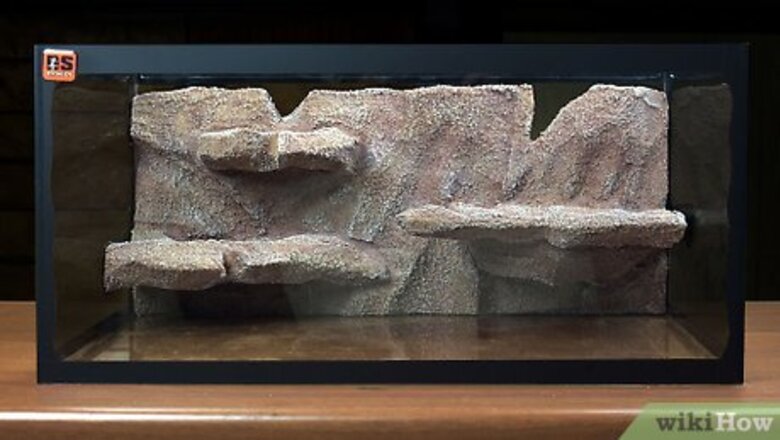
views
X
Research source
When creating a habitat for your Leopard gecko, you should try to mimic his natural habitat as much as possible.
Choosing a Terrarium
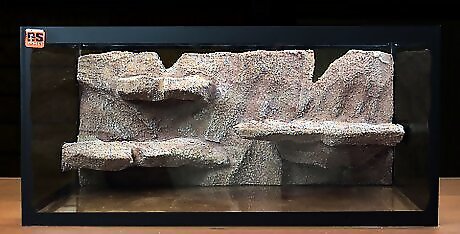
Use a long and wide aquarium, terrarium, or vivarium. A vivarium is a wooden tank with a glass front, which will help to keep your electricity bills down. Leopard geckos are ground animals, so you should use a glass tank so the leopard cannot climb up the walls of the tank. You should not use a wire or mesh cage for your gecko, as wire cages will not hold heat very well, are easy for your gecko to escape from, and your gecko can get injured if his foot or toe gets caught in the wire.
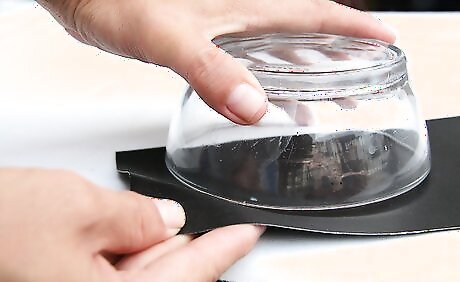
Provide your gecko with plenty of space. Leopard geckos are not very active lizards, but they should be given a good amount of room to move around. A tank that's at least 20 gallons (76 L) should be sufficient. However, avoid getting a tank that is too large for young geckos, as a tank that is too large can make it difficult for your gecko to find the heat source in the tank and hide. Adults have no size limit, but larger tanks must include plenty of hides. The recommended sizes are 20 gallons (75.7 L) for one adult leopard gecko and 10 gallons (37.9 L) for one baby leopard gecko. A single adult Leopard gecko will need a 10 gallon tank (20 gallons would be better), two geckos will need a 15–20 gallon (56.8–75.7 L) tank and three geckos will need a 20–30 gallon (75.7–114 L) tank. Up to three Leopard geckos can be kept in the same cage, though they should be of a similar size and males should be kept alone. Only females who are similar in size can be housed together, and even then they may fight. Keep an extra tank incase they fight.
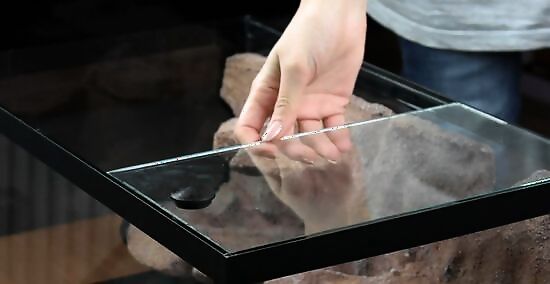
Cover your tank with a lid made of wire or mesh. Though your gecko will not be able to climb the glass walls of his tank, you should always cover your tank with a wire or mesh lid to keep out insects, other pets, or children. You can use a sliding door at the front instead, which will work better with taming. Avoid plastic, glass, or any other lid of solid materials. Solid lids can cause the temperature of the tank to rise to unsafe levels for your gecko.
Adding Substrate and Decor
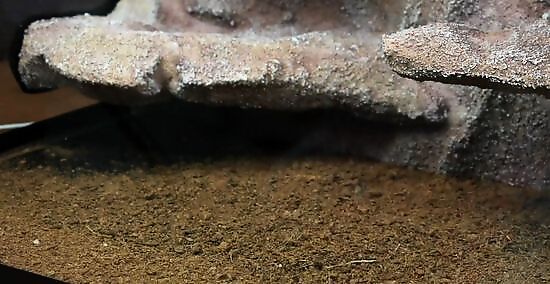
Use dry Eco earth or textured tile as a substrate in the tank. Substrate is the bedding or flooring in your gecko's tank that he walks on. Never use sand at all. The natural habitat of these geckos has stone and hard packed dirt. Sand can lead to impaction. Tiles and flat stones are cheap, conduct heat well, are nice to look at, easy to clean, and do not pose a health risk to your gecko. A thin layer of sand or Eco Earth should be under and between the tiles. The tile must be textured so the Leo has no trouble walking on it. Can get tiles and flat stones from your local pet store. This substrate is also permanent. You can also use newspaper, butcher paper, or shelf lining as substrate in the tank. A paper-based substrate is easy to maintain and easy to replace. This will make cleaning the tank very quick, as you often need to only replace the paper substrate. However, insects can get underneath it. Some owners and vets recommend using reptile carpet, which is specially designed for reptile tanks. It looks nice in the tank and does not pose a health risk to your gecko. You can find it at your local pet store. The claws and teeth of your gecko may get caught, though. Insects can get underneath this as well.
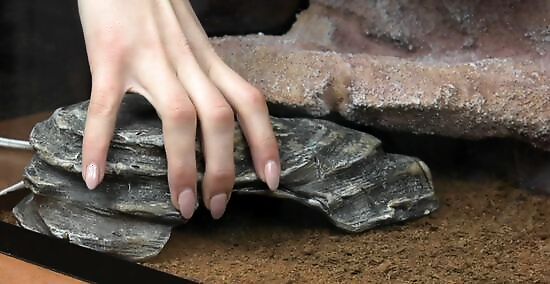
Create a warm hide and a cool hide for your gecko. Your gecko's hide is a key part of his living environment. He will use his hide to shelter himself from light, heat and anything that frightens him, like other pets or people close to his tank. The hide should be long enough for your gecko to fit in comfortably. You can make your own hides with Tupperware containers, or purchase hides that resemble natural rock sources from your local pet store. Try to have a warm and a cool hide in the tank for maximum comfort. Hides that go up against the side of the tank aren't recommended, as they defeat the purpose and don't hide your gecko. Place the warm hide on the warm side of the tank. Your gecko will use this hide to digest his food and warm up when he feels cold. Place the cool hide on the cool side of the tank. Your gecko will use this hide to regulate his body temperature when he feels too hot and needs to cool down.
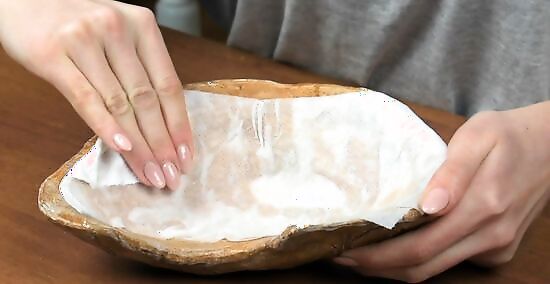
Make a warm, moist hide for your gecko. A moist hide will help your leopard maintain a balanced body temperature and enjoy a higher humidity in his tank. This is also for shedding. Line this with moist paper towel, Eco earth, or sphagnum moss. You can make a moist retreat out of a small plastic container that is sandwich sized. You will need to mist the husk or moss daily with a spray bottle of water so it remains moist, but not wet. You can also buy pre-made moist retreats at your local pet store.
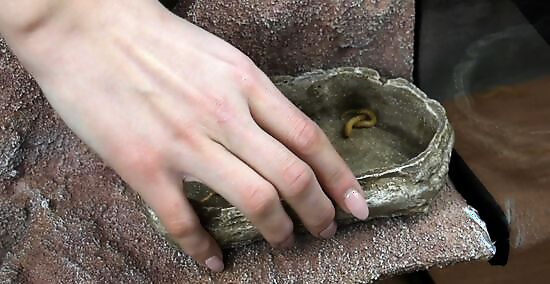
Place a food and water bowl in the tank. Look for a combined food and water bowl made for Leopard geckos at your local pet store. The food bowl is only needed if you will use mealworms as a regular diet. Refill the water bowl whenever the water gets low or dirty. Use bottled water, tap water left out for 24 hours, water treated with reptisafe (found in pet stores) or any filtered water. Do not get a water bowl that is too deep, as your gecko could have difficulty accessing the water in a deep water bowl and it can pose a drowning hazard. Make sure the water bowl is big enough for your gecko to bathe in.
Add plants and/or rocks or logs. You can use live or artificial plants in the tank to give your gecko extra security and spots to hide himself. You can use these to keep your gecko from getting bored. However, if you use live plants, make sure they are non-toxic and safe for leopard geckos. Live plants may look more appealing but they require more upkeep and can increase the humidity levels of the tank. You can also add rocks or small sticks and logs in the tank to give your gecko spots to perch or climb on. Always clean any rocks or sticks to remove dirt and bacteria before putting them in the tank. You should also smooth any sharp corners or sides on the rock so your gecko does not injure himself. Make sure you secure the decor in your tank so nothing will fall off and injure your gecko. You should also strip the sticks of their bark to get rid of any bacteria or parasites. You can place the sticks or wood in the oven on low heat for 20-30 minutes to kill any parasites on them before putting them in your gecko's tank. You may want to put paper towel in the washroom corner and if you do change it whenever it is used.
















Comments
0 comment